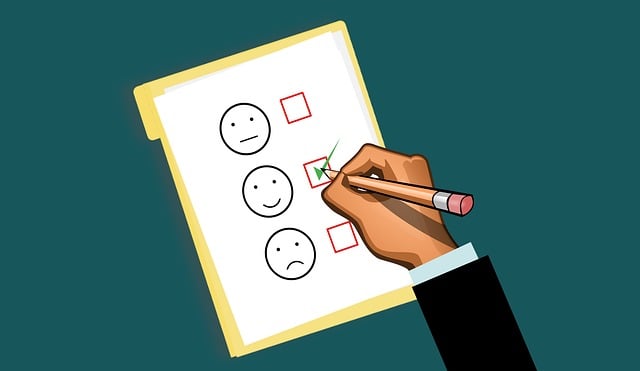Thursday, May 4th 2023
Want to See Cutting Edge Ways You Can Measure Cultural Training Effectiveness?

Cultural Training...
Cultural training programs are an essential aspect of creating a healthy and inclusive work environment for companies. These programs educate employees on various topics related to diversity, equity, and inclusion such as gender equity, sexism, bullying, racial sensitivity, cultural sensitivity, and sexual harassment. Additionally, they address toxic behaviors such as the use of profanity or hate speech.
According to a survey conducted by the Society for Human Resource Management (SHRM), around 60% of companies provide DEI training to their employees. This number is expected to increase as more companies recognize the benefits of having a diverse and inclusive workforce.
The benefits of cultural training programs for companies are numerous. A diverse and inclusive workforce can lead to improved creativity, problem-solving, and decision-making. It can also lead to increased employee engagement and retention, as well as a better reputation for the company. A study by Deloitte found that organizations with more diverse and inclusive cultures have 19% higher revenue, due to improved innovation and better decision making.
While modern HR teams have embraced the opportunity to improve the employee experience by providing these training programs, one key challenge is how to measure the effectiveness of these programs. Are they working? Which ones are working better? Does the training wear off over time? What’s the right cadence to run these programs? How do we know if we are spending too much or not enough on these programs? To answer these questions, HR teams need better data.
Traditional Measurement Techniques
Measuring the effectiveness of cultural training programs is an important aspect of ensuring that they are achieving their intended goals. HR teams can use a variety of methods to assess the impact of these programs on their employees and the overall culture of the organization.
One traditional way to measure the effectiveness of cultural training programs is through pre- and post-training assessments. These assessments can include surveys, focus groups, or interviews with employees to gauge their knowledge, attitudes, and behaviors before and after the training. The problem though with this method is employees know what answers the HR team wants to hear and will parrot those answers back after the training.
Another traditional way to measure the effectiveness of cultural training programs is through observation and feedback. HR teams can observe employees in the workplace to see if they are applying the skills and knowledge learned during the training. They can also gather feedback from managers and supervisors. The obvious challenge with this method is that it is incredibly labor intensive, not very systematic and does not scale well to large organizations and ones with workers spread across different offices and countries.
The last of the traditional ways to measure the effectiveness of cultural training programs by tracking metrics such as employee engagement, retention, and performance. HR teams can also use data analysis on employee demographics, turnover rates, and complaints related to DEI issues. While this approach is much more systematic and data driven than other approaches, the limitation of this approach is that it is not a continuous, real time or automatic process of viewing change. It is a great way to measure some high level metrics, but it does not measure some of the most important outcomes we want to see from our cultural training programs, an understanding of how people are treating each other every day.
Passive Listening
Cultural training programs are a success if people treat each other better every day. The best window into how we treat each other are our daily communications. By understanding these communications HR teams can gain valuable insights into the workplace experience our employees live through every day. New passive listening solutions like TruPulse analyze communications automatically, continuously and in realtime to provide group level insights as to whether we are living up to our cultural standards.
How does it work? Before TruPulse analyzes communications, it de-identifies all threads so that the privacy of individuals is maintained. TruPulse then sends these threads through AI analyzers that are trained by machine learning techniques to identify when communications fall outside of our expectations for certain behavior. Things like DEI, abusive language, sexual harassment, sexism, profanity and hate speech can be measured and identified. HR teams can see trendlines of activity for these behaviors to understand if things are getting better, staying the same or getting worse.
If the DEI training you just held actually worked, the HR team would expect the number of concerning communications to decrease over the next month as people internalize the training and adapt to the cultural norms the company is hoping for. If not, the training may not have been effective. By tracking these issues continually, HR teams can also spot when the training may be wearing off and a refresher training program may be needed. The correct cadence for training may not be yearly. Maybe it is every 6 months or every year and a half. Maybe a one time training fixes things and there is no need for future training. Maybe significant training is needed in one area but your company does not have problems in another. Only by seeing real time and continuous data can we really know.
So if these communications are all de-identified and we don’t know who the person is that may have had concerning communications, how do we use the data? TruPulse is not a compliance tool to monitor employees. It de-identifies communications specifically to ensure employee privacy. Companies have long established procedures for how individuals can safely and confidentially report concerns about individual behavior and have written policies on how the company will follow up with investigations. What TruPulse does is to give group level insights to help HR teams address the questions like are we living up to our cultural expectations and if we are trying to address problems with programs, are the programs we are using working?
Cultural training programs are an essential aspect of creating a healthy and inclusive work environment for companies. These programs educate employees on various topics related to diversity, equity, and inclusion such as gender equity, sexism, bullying, racial sensitivity, cultural sensitivity, and sexual harassment. Additionally, they address toxic behaviors such as profanity and hate speech. Measuring company culture, keeping a finger on the pulse of the culture over time and understanding when further programs are needed is best done with solutions that are continuous, realtime and automatic in nature. Passive listening solutions like TruPulse can give HR teams an AI based solution to measure cultural health which will make a better workplace all while protecting employee privacy.
Recent blog posts


